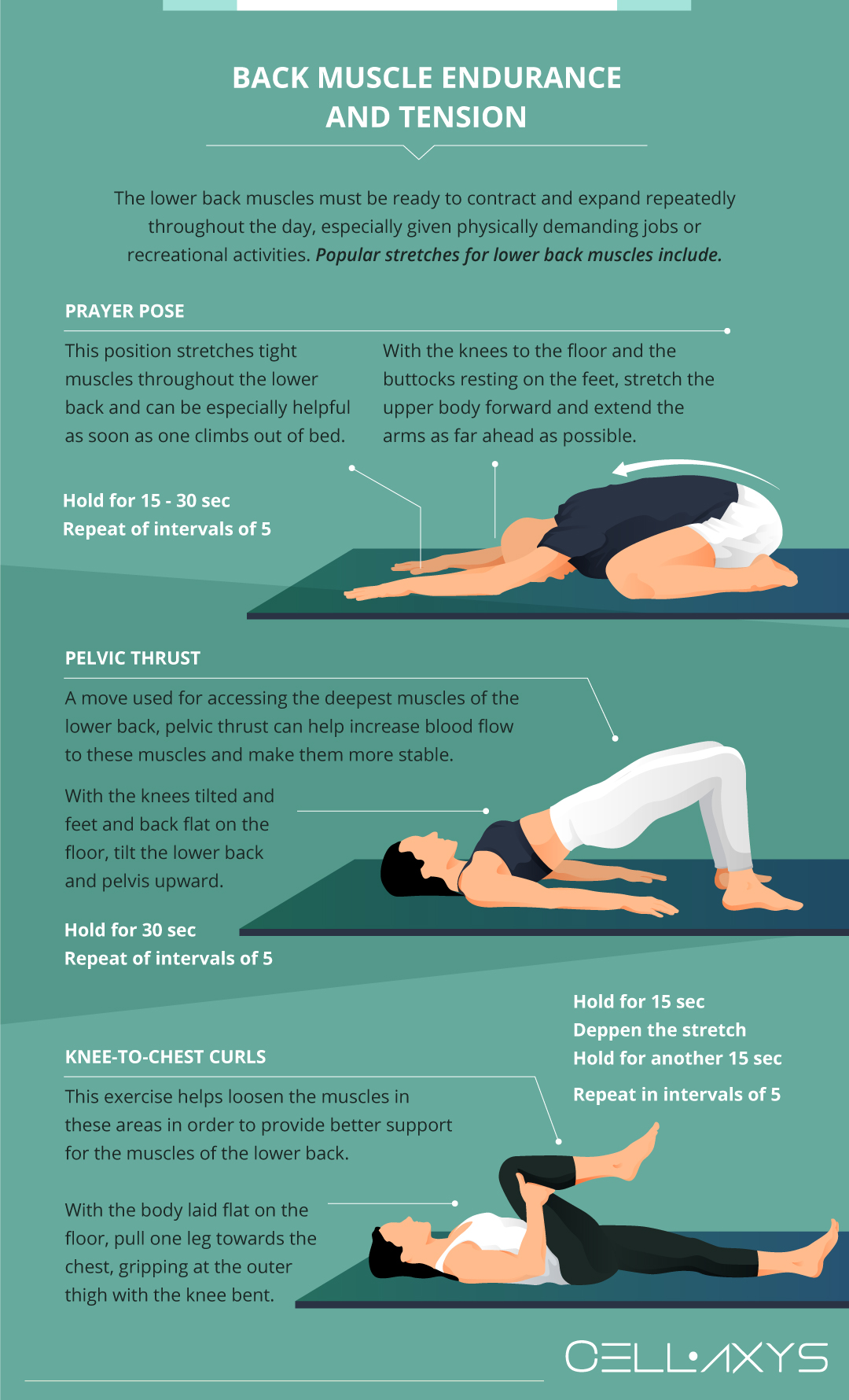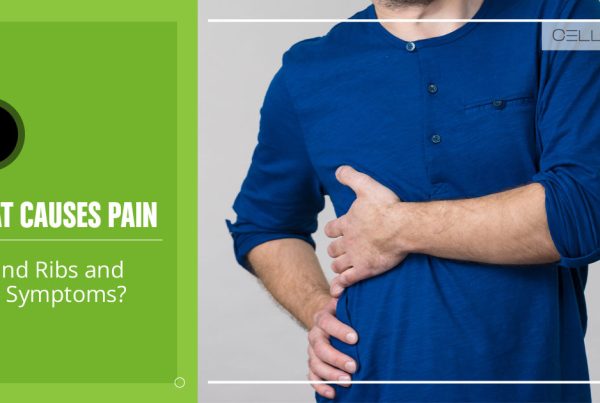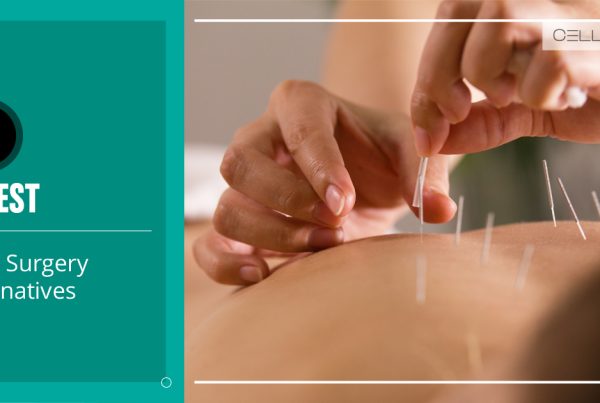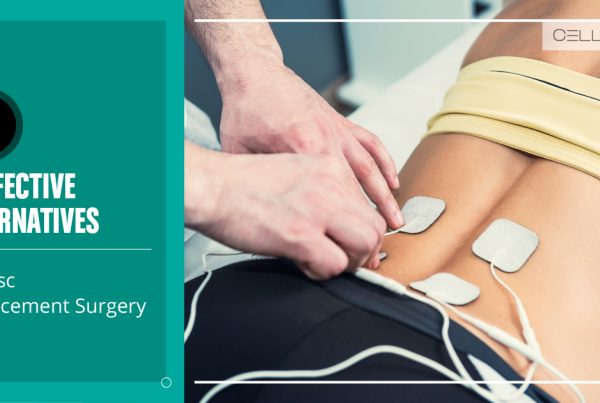Published on: November 8, 2019 | Updated on: November 3, 2024
Tensing muscles is the body’s way of preventing further damage and signaling that we should take steps to help these muscles loosen up. If the necessary precautions aren’t taken, the condition of these muscles can worsen and lead to more severe issues.
These issues can impact our ability to move and cause chronic pain throughout the body, including the lower back. Back muscle tension expresses itself throughout our lower body and can even impact the muscles of the pelvis, hips, and upper legs.
So, how can tight muscles result in back pain?
Tight lower back muscles often cause symptoms such as spasms, cramps, stiffness, and pain. These pains can range from constant, minor aches to full-on incapacitating discomfort.
Tight back muscles can result from a range of possible causal factors. Strenuous physical activity, dehydration, awkward posture, or a poor mattress can all impact how tight our lower back muscles are and may cause the symptoms mentioned above.
While it is expected to feel tension after such activities, precautionary measures should be taken to ensure good muscular health if it does not subside within a few days.
Muscle Tension and Pain
Muscle tissue comprises cells that can contract and expand to move the body. These cells are typically long and slender, becoming known as “muscle fibers.” These muscle fibers are well supplied with blood vessels, which keep them oxygenated and healthy.
Along with the network that supplies blood and oxygen to these tissues, the nervous system also connects to and controls them. It sends electrical impulses to produce contractions when we need to move.
Similarly, nerves within the muscles send diagnostic signals to the brain, giving it an idea of the condition of these muscles. When these nerves sense any sign of damage or tension, they send impulses to the brain, which create a pain response within the specific area.
If the muscles are dehydrated, overused, or suffer an acute injury, they tense up to prevent damage to these underlying structures. This is the reason tense muscles create pain.
Muscle Groups Linked to Back Pain
The first thing you need to know is the anatomy of your back. Our back has many muscle groups that work together to support the spine. This way, we maintain our posture and move around freely. There are specific muscles that influence the back in one way or another:
Erector Spinae
These muscles run beside the spine on both sides and support it, enabling the body to rotate and extend. When these become tight, they create a pull on the spine, which causes pain.
Quadratus Lumborum (QL)
This one is on both sides of the back and stabilizes the pelvis and spine. If it gets tight, the lower back experiences pain as the spine becomes out of line, and posture is also affected.
Hip Flexors (Iliopsoas)
These muscles go from the lower spine to the thigh and help maintain an upright posture and walk. When these muscles get tight, they can bend your pelvis forward, increasing the lower back arch and causing pain in the lumbar region.
Gluteal Muscles
When the glutes get tight, there is an imbalance in the pelvis and lower back, which further strains the lower back, which has to make up for the movement.
Hamstrings
Finally, the hamstrings are attached to the pelvis, and when these muscles get tight, you cannot bend at the waist or extend your leg.
Warning Signs of Muscle-Related Back Pain
The key is to know the warning signs and act in a timely to avoid muscular back pain that can become chronic.
Here are some of the signs to watch out for:
- Stiffness and Pain. You feel an ache or tightness in the back, indicating something is wrong. When muscles get tight, you will feel stiffness in specific areas of the lower back, upper back, or between the shoulder blades. The stiffness will, of course, cause pain and restricted movement.
- Restricted Movement. When the muscles are tight, the body is less flexible, which limits one’s ability to bend or carry out normal daily activities. Even tasks like bending to pick up a toy increase discomfort and pain.
- Muscle Knots. If the muscles are too tight, they can develop trigger points called muscle knots. These can be very painful. The knots may develop in the back, neck, and shoulder.
- Referred Pain. At times, the discomfort is felt in areas other than the affected area. For example, it’s common to feel pain in the lower back or down the leg, which seems like sciatica but is otherwise caused by muscular tightness.
- Increased Pain After Activity. Sitting longer or engaging in physical activities may worsen the pain. Sudden movement can also flare up or increase the pain.
Relieving Back Tension at Home

A variety of muscle issues stem from a lack of muscular endurance. The lower back muscles are especially susceptible to these problems as they are often untrained or too weak. These muscles must be ready to contract and expand repeatedly throughout the day, especially given physically demanding jobs or recreational activities.
The benefit is that they can all be performed in the comfort of one’s home without the added cost of an expensive doctor’s visit. If these treatments do not provide the necessary relief, it may be time to consult a physician to examine for more profound issues.
At-Home Stretches
Spending a few minutes each day stretching and holding these muscles can help strengthen the muscle fibers and expand their endurance over long periods.
Famous stretches for lower back muscles include:
Prayer pose
A popular move in yoga, this position stretches tight muscles throughout the lower back and can be especially helpful as soon as one climbs out of bed.
With the knees on the floor and the buttocks resting on the feet, stretch the upper body forward and extend the arms as far ahead as possible. Hold this pose for 15 to 30 seconds and repeat in intervals of 5 for the most significant effect.
Pelvic thrust
A move used for accessing the deepest muscles of the lower back, pelvic thrust can help increase blood flow to these muscles and make them more stable for extended periods.
With the knees tilted and feet and back flat on the floor, tilt the lower back and pelvis upward and hold this pose for up to 30 seconds or until the muscles tire. Release and repeat in intervals of 5.
Knee-to-chest curls
This exercise helps loosen the upper legs, hips, and pelvis muscles, providing better support for the lower back muscles.
With the body laid flat on the floor, pull one leg towards the chest, gripping the outer thigh or shin with the knee bent. Bring your inner thigh as close to the chest as possible, hold for 15 seconds, deepen the stretch a bit further, hold for another 15 seconds, then let go. Repeat in intervals of 5.
Lateral leg lifts
This exercise affects the hip abductor muscles. These muscles help keep the pelvis stable and reduce back pain. They must be kept strong because they allow a person to maintain proper mobility and balance.
Lie down on one side with your legs together, knee-to-knee. Raise the upper leg above the ground as comfortably as possible, maintaining it straight and stretched. Maintain this position for 1-2 seconds, then bring the leg back to your lower leg. Do this ten more times. Flip over onto your other side and lift the opposite leg. On each side, do three sets total.
Cat stretches
The cat stretch can help relieve muscular stress, extend the back, and strengthen it.
Kneel on the ground with your knees hip-width apart, then drop to your hands. Lift the top of your back as high as possible while bringing your pelvis inward. Allow the muscles to relax slowly and the abdomen to sink downward. Hold for 30 seconds before returning to your original starting position. Do this five times five.
Supermans
Powerful back extensors are required to maintain good posture. On both sides, these muscles run parallel to the spine. Weakness in the back extensors might jeopardize spinal and pelvic support.
Lie flat on the ground, face down, with your legs stretched together and your arms in front of you, reaching as far out as possible. Raise your feet and hands to a height of about 6-10 inches above the floor. Keep your head straight and focus on the ground to avoid neck damage. Extend your feet and hands as far as they will go. Hold the position for 10-15 seconds before falling flat. Do ten repetitions at least twice a day.
These stretches help loosen the muscle fibers in the lower back and add supportive muscle tissue over time, lessening the load the current lower back muscles have to bear.
Stretching these muscles is essential for maintaining healthy blood flow in these areas and increasing the amount of muscle tissue therein. For many suffering from lower back pain and tense muscles, this may provide immediate relief from a flare-up and prolonged benefits that prevent such breakouts.
At-Home Physical Therapies
Physical therapy is an umbrella term for treatment by physical means. Massage, hot/cold therapy, and exercise are all valuable techniques for conquering lower back tension.
Self-massage may be difficult in the lower back, so a partner is advised. Simple kneading of the lower back will temporarily relieve lower back muscles. Applying topical ointments during the massage may boost both effects and relieve pain.
Hot/cold therapy simply applies heat to relax the muscles in an area, followed by a cold treatment such as an icepack to compress and numb these muscles. This act of relaxation, constriction, and numbness helps slowly pull the lower back muscles out of their tense state so as not to cause further damage to the body.
Other Solutions to Back Tension
Alongside stretching, regular use of over-the-counter medications has been shown to help alleviate lower back tension and symptoms. From topical ointments to low-dose medication, there are several options a person may choose when dealing with their lower back tension.
- Topical Ointments: ICY HOT and Vick’s are two variations on the same treatment. These topical ointments often contain a mix of menthol, aspirin, and lidocaine, which provide cooling, warming, or both sensations. These treatments may be enough to relax the muscles, relieve tension, and eliminate pain.
- Ibuprofen, Naproxen, and Acetaminophen are nonsteroidal anti-inflammatory drugs (NSAIDs) that increase blood flow and decrease painful swelling caused by tension.
When to See a Doctor and What to Expect?
If at-home treatments don’t seem to be helping, if episodes of lower back pain last longer than a few hours, or if back pain becomes much more prevalent, it may be time to consult a doctor about deeper issues within the lower back.
Some tension is normal for any muscle in the body, especially after long bouts of physical exertion. Tension is the body’s natural defense to prevent further damage to the various muscles. It’s only when these episodes of pain from tension begin to impact one’s daily life that one should seek out professional help.
Medical History
Suppose muscle tension in the lower back is starting to impact an individual’s capacity to perform daily tasks. In that case, it typically means there is a deeper issue within the structures of these muscles.
Doctors usually begin a consultation by diving into the patient’s medical history.
Has there been acute damage to the lower back in the patient’s past? Does the patient’s family have a history of lower back complications? Have there been any signs of a degenerative illness forming?
Answering these questions will help doctors determine where to begin their physical examinations and what to look for.
Physical Examination
Whether or not a potential causal factor was identified, doctors almost always follow up the medical history analysis with a physical examination. Techniques such as palpation, where doctors apply pressure to specific trigger points while the patient is in a particular pose, can help doctors determine where the issue is and what it may be (soft tissue damage, muscle damage, cartilage breakdown, etc.).
Medical Imaging
MRIs, CT scans, and X-rays give doctors an image of the different structures within the lower back. These techniques can examine muscle health, tendon and ligament structure, cartilage stability, and bone health.
All these images can give doctors a clue in determining what is causing the muscles in the lower back to tense up and whether it is a symptom of something more profound.
Diagnosis
Chronic muscle tension can signify several deeper issues within the lower back. Arthritis, acute trauma (sports injuries or work-related accidents), or osteoarthritis are some of the most common root causes of chronic lower back tension. These issues do not resolve independently and typically require some kind of intervention.
If the at-home treatments mentioned above did not provide substantial relief, doctors may prescribe stronger medication or consider surgical intervention if the issue is significant.
While these treatments may be effective, their side effects – long recovery periods, low success rates, and the abundant issues with regular use of medication – may point patients to seek alternatives.
For those seeking not only relief from their pain but treatment for the underlying issues causing chronic lower back tension, regenerative therapy may be the solution.
Regenerative Therapies
While not a new concept, advancements in regenerative sciences have produced new treatments for those suffering from issues due to degenerated tissues. Most clinics offering these treatments typically use two means to achieve their effects – platelet-rich plasma (PRP) or cell-based therapies.
PRP Therapy
Platelet-rich plasma (PRP) therapy uses a patient’s blood growth and healing factors to promote healing at the injury site. The doctor isolates platelets from the patient’s blood plasma, processes and concentrates them, and reinjects them into the area of injury.
Platelets are the body’s natural defense against damage. At the onset of any injury, the platelets release 10 Growth Factors and send chemical signals to attract healing components and help rebuild the damage. They also produce a web-like scaffolding called fibrin that supports the development of new tissues.
PRP is a popular treatment for orthopedic, spine, and sports-related injuries. The process is performed within 45 minutes and is outpatient, meaning you can go home right after the treatment.
Cell-Based Therapies
Cell-based therapies are also known as stem cell therapies. The process extracts the patient’s cells or “autologous” tissues, processes them, and then reinjects them into the injury site. These cells are typically harvested from the patient’s adipose (fat) tissue or bone marrow.
When the cells are extracted from the patient’s adipose tissue, the process is called Minimally Manipulate Adipose Tissue (MMAT) transplant. When they are harvested from the bone marrow, it is called Bone Marrow Concentrate (BMAC).
Both cell-based therapies are performed within 1.5 to 2 hours. Like PRP, they are outpatient procedures. The doctor uses live X-rays (fluoroscopy) and ultrasounds to spot the exact location of the transplant.
PRP and cell-based therapies are less painful and non-invasive processes with a short recovery time.
Sources
Footnotes
- Karen D, Green DS, Jensen GM, Savinar E. A comparison of muscular tightness in runners and nonrunners and the relation of muscular tightness to low back pain in runners. Journal of Orthopaedic & Sports Physical Therapy. 1985;6(6):315-23.
- Borg-Stein J, Wilkins AN. Soft tissue determinants of low back pain. Current Pain and Headache Reports. 2006;10(5):339-44.
- Van Dieën JH, Reeves NP, Kawchuk G, Van Dillen LR, Hodges PW. Motor control changes in low back pain: divergence in presentations and mechanisms. Journal of Orthopaedic & Sports Physical Therapy. 2019;49(6):370-9.
- Riihimäki H. Low-back pain, its origin and risk indicators. Scandinavian journal of work, environment & health. 1991:81-90.
- Krismer M, Van Tulder M. Low back pain (non-specific). Best practice & research clinical rheumatology. 2007;21(1):77-91.
References
- How Can Tight Muscles Result In Back Pain? American Pain Institute. Accessed 2/23/2024.
- Muscle Tissue. NIH – National Cancer Institute. Accessed 2/23/2024.
- What Are NSAIDs? OrthoInfo. Accessed 2/23/2024.
CELLAXYS does not offer Stem Cell Therapy as a cure for any medical condition. No statements or treatments presented by Cellaxys have been evaluated or approved by the Food and Drug Administration (FDA). This site contains no medical advice. All statements and opinions are provided for educational and informational purposes only.
Dr Pouya Mohajer
Author
Pouya Mohajer, M.D. is the Director of Spine and Interventional Medicine for CELLAXYS: Age, Regenerative, and Interventional Medicine Centers. He has over 20 years of experience in pain management, perioperative medicine, and anesthesiology. Dr. Mohajer founded and is the Medical Director of Southern Nevada Pain Specialists and PRIMMED Clinics. He has dedicated his career to surgical innovation and scientific advancement. More about the doctor on this page.
Dr Pejman Bady
Contributor
Dr. Pejman Bady began his career over 20 years ago in Family/Emergency Medicine, working in fast-paced emergency departments in Nevada and Kansas. He has served the people of Las Vegas as a physician for over two decades. Throughout this time, he has been met with much acclaim and is now the head of Emergency Medical Services in Nye County, Nevada. More about the doctor on this page.









